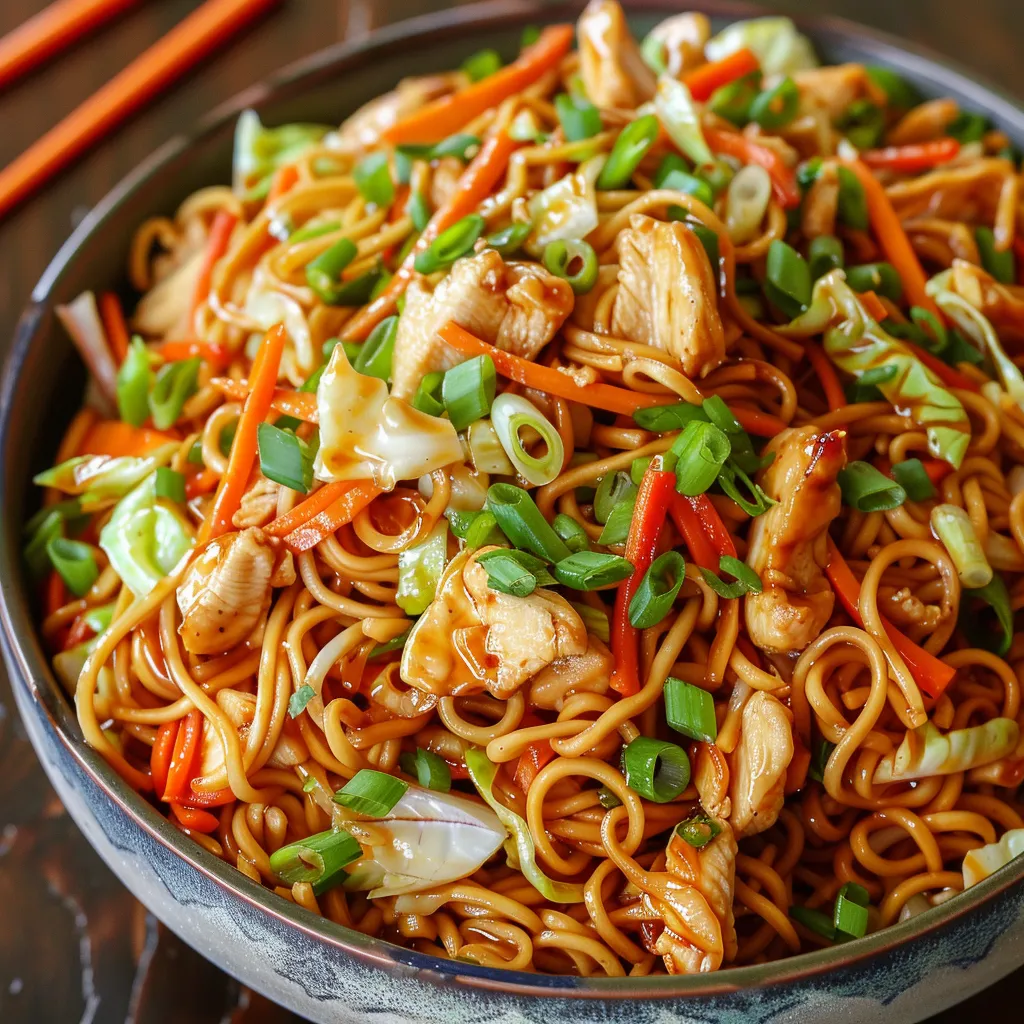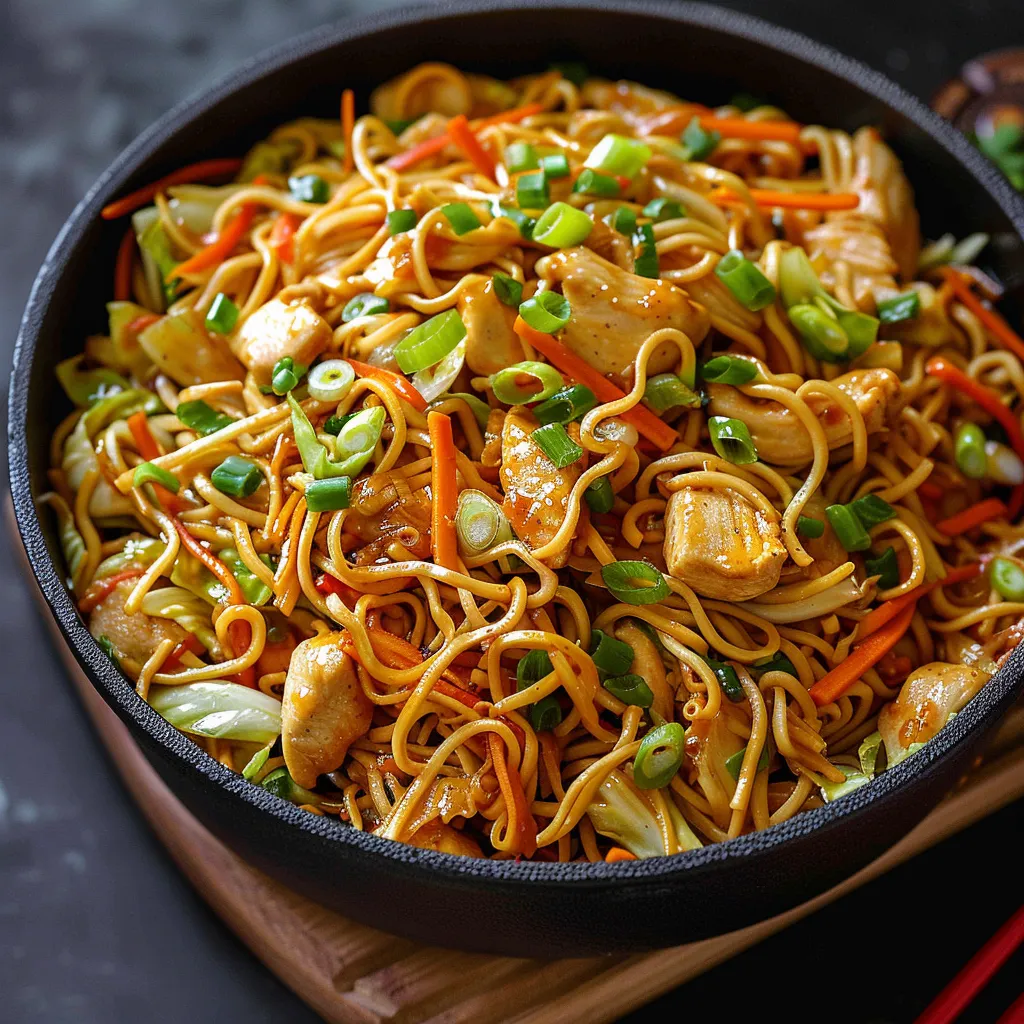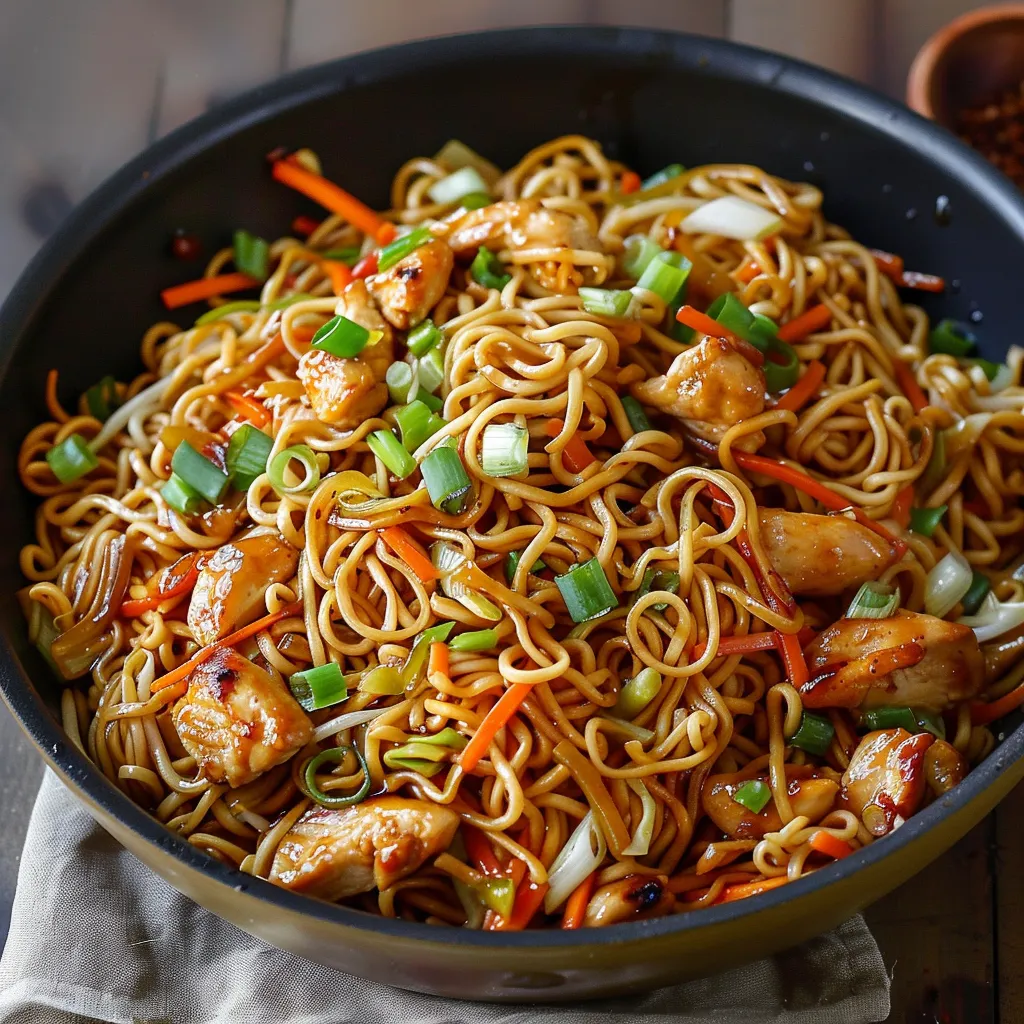 Pin it
Pin it
After trying countless times to make my favorite takeout dish at home, I've finally nailed a homemade chow mein that hits all the right notes. The trick is in the sauce - it turns basic ingredients into something amazing. Now I can whip up a perfectly balanced bowl with soft noodles, crunchy veggies, and that rich sauce that sticks to everything just right.
Everything changed when my Chinese neighbor told me to 'give the wok some air' between adding ingredients. Now I cook each part on its own before mixing everything together.
Must-Have Components
- Chow Mein Noodles: Go for the yellow wheat ones that actually say chow mein on the package.
- Crisp Vegetables: The crunchier they are, the tastier your dish will be.
- Oyster Sauce: This makes all the difference for real flavor - don't try to skip it.
- Light Sesame Oil: Just a small amount adds that nutty taste everyone loves.
- Cooking Oil for Heat: Grab peanut or vegetable oil when you're stir-frying.
 Pin it
Pin it
Step-by-Step Guidance
- Nail Your Preparation
- Cut everything before you start cooking. Line ingredients up based on when they go in. Mix your sauce beforehand. Make sure chicken is completely dried off. Get that wok hot before you pour any oil in.
- Handle Those Noodles Right
- Cook them until they've got a slight bite. Cool them down fast under cold water. Add a tiny splash of oil so they don't clump together. Lay them out on a baking sheet if you're not using them right away. Make sure they're ready before you fire up the wok. Don't cook them too long or they'll turn to mush.
- Get Your Stir-Fry Technique Down
- Wait until your wok starts to smoke a bit. Pour oil and turn the pan to spread it around. Work with small amounts of chicken at a time. Set the cooked chicken aside. Put veggies in based on how long they need to cook. Keep stirring everything non-stop.
- Mix Up The Perfect Sauce
- Pour sauce around the sides of your wok. Let it bubble up and get a bit thicker. Toss everything quickly to get it coated. Add your noodles bit by bit. Keep mixing until everything's well combined. Watch for when the sauce coats the noodles nicely.
My chow mein game totally changed when I learned to let the sauce bubble and brown slightly in the hot wok before adding noodles - it creates this amazing richness you can't get otherwise.
Heat Is Key
Your cooking surface needs to be super hot when you start. If you don't hear a sizzle when food hits the pan, wait longer before adding anything.
Prep Work Pays Off
You can chop all your ingredients hours ahead of time. Just keep the cut veggies in your fridge and mix up your sauce so it's ready to go when cooking time comes around.
Whenever I'm in the mood for Chinese food now, this homemade chow mein is my first choice. Success comes down to getting organized and timing things right - have everything cut and ready before firing up the stove. Just remember that hot pan and quick movements will give you that authentic restaurant quality finish you're looking for.
 Pin it
Pin it
Frequently Asked Questions
- → What’s the right noodle for this?
- You’ll need chow mein noodles—cooked, they should weigh about a pound.
- → Can I switch the veggies?
- Totally fine! Use what you have, but keep cabbage as the main veggie.
- → Why rinse noodles in cold water?
- It stops them from overcooking and keeps their texture just right.
- → Does the sauce taste traditional?
- Absolutely! The oyster sauce and sesame oil give it an authentic touch.
- → Can I make this ahead?
- It’s best fresh, but you can save leftovers. Just know the noodles get softer.
